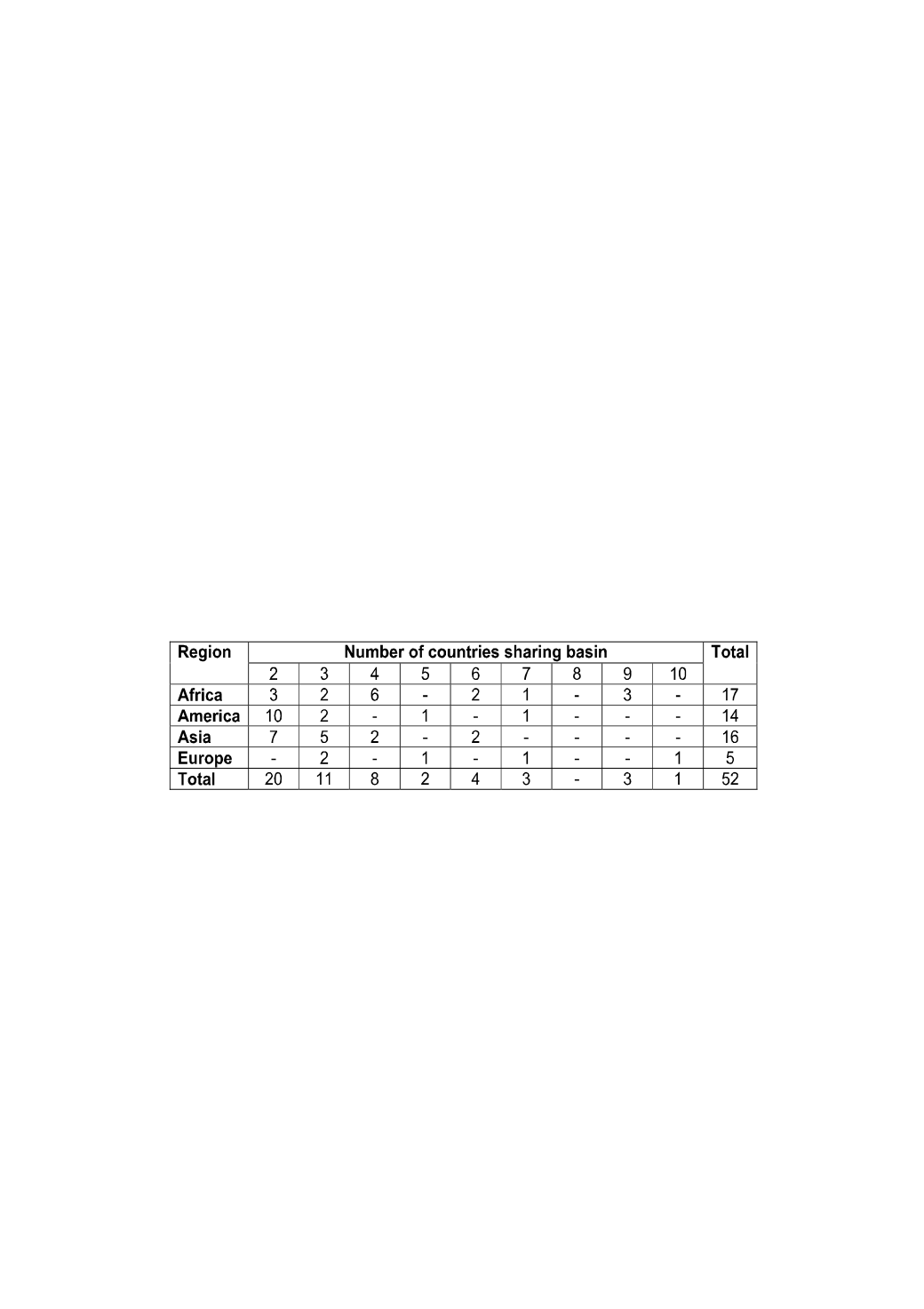
132
In India charging economic water rates is a distance dream. The Vaidyanathan
Committee (1992) recommended recovery of O & M cost and part of capital
cost in irrigation sector. This could not be achieved. Pricing and cost recovery is
a crucial instrument to water management in the present century. This,
however, needs a paradigm shift in its approach to socio-political scenario of
the developing countries. Water is considered to be a subsidized commodity
and recovery of cost for its use will be a big political challenge.
Sharing of water on national and international water bodies
There are 41 countries (20 in Africa) where at least 80 percent of the total area
lies within international basins, Estimates show out of 214 river and lake basins,
about 75% are shared by two countries, nine basins are shared by six or more
countries. Table 8.4 shows major international river and lake basins having
catchment area in excess of 1,00,000 Km
2
.
Table 8.4 : Major international river and lake basins having (catchment
area in excess of 1,00,000 Km
2
)
India has international river basin boundaries with Pakistan, Bhutan, Nepal and
Bangladesh. International organizations, to a great extent, stay away from the
development and management of international water bodies because of
political sensitiveness.
On a national scale, most of the river basins transgress adjacent state
boundaries and may lead to inter state dispute. Sharing of Cauvery between
Karnataka, Tamil Nadu and Kerala is an example. Similar is the case with
sharing of Yamuna between Haryana and U.P. The Krishna river passes through
Maharashtra, Karnataka and Tamil Nadu and has been amicably settled. So is
the Subarnarekha river flows covering Jharkhand, Orissa and West Bengal or
Narmada flow passing through Maharashtra, M.P. and Gujarat.


